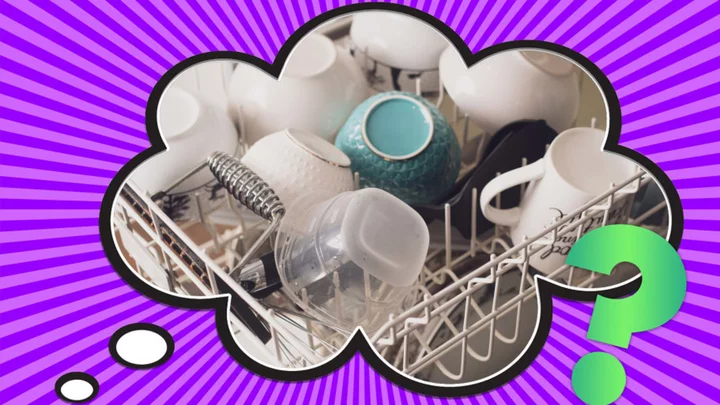This article contains affiliate links to products selected by our editors. Mental Floss may receive a commission for purchases made through these links.
Dishwashers can be great. You load them up with dirty dishes, add detergent, pick a setting, and then presto—within a few short hours of pressing the wash button, just about everything comes out steaming hot, clean, and dry.
It sure beats washing dishes by hand with a bacteria-ridden sponge. However, you might have noticed by now that all of those plastic plates, cups, and storage containers you put in the dishwasher tend to come out a little different. Instead of being dry by the end, those items are still covered in beads of water.
So what gives? Turns out, it’s not your dishwasher’s fault that plasticware never seems to fully dry in the dishwasher. It happens because of science.
According to Compact Appliance, dishwashers get pretty hot, typically between 130°F and 170°F. Dinnerware made of glass, metal, and ceramic absorbs this heat, which then helps moisture evaporate quickly during the dishwasher’s dry cycle. But plastic doesn’t absorb and retain heat the way those other materials do and actually cools down much faster, meaning the moisture on the surface is less likely to evaporate by the time the cycle ends.
In addition, condensation can puddle up on plastic storage containers because they’re designed with rims and lips to create a tighter seal for lids. This makes it even tougher for these items to completely dry after being run through a dishwasher.
Fortunately, there are some good workarounds you can try. Apart from popular dish-drying hacks on TikTok (which reportedly have mixed results), you could try switching up how you load the dishwasher in the first place. The next time you’re doing it, put those pesky plastic bowls, cups, and containers at an angle on the top rack. Instead of pooling up, the water should drip off more easily on its own. You might even want to grab a rinse aid, as this helps to reduce the water’s surface tension and enhances the drying process.
If you’re in the market for a new dishwasher, you may want to look at home appliance brands like GE, which have begun to factor plastic drying times into the designs for newer models. For more tips on how to best load a dishwasher, you can also check out our guide.
Have you got a Big Question you'd like us to answer? If so, let us know by emailing us atbigquestions@mentalfloss.com.
This article was originally published on www.mentalfloss.com as Why Does Plastic Never Fully Dry in the Dishwasher?.









